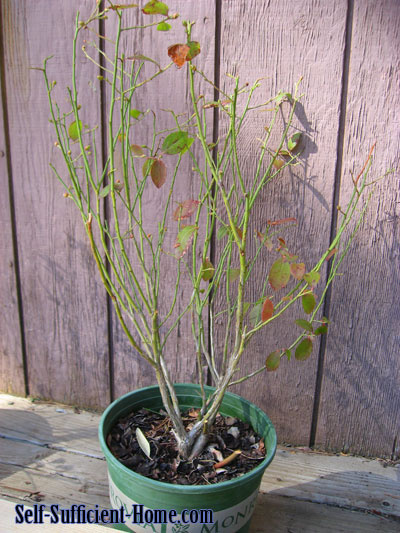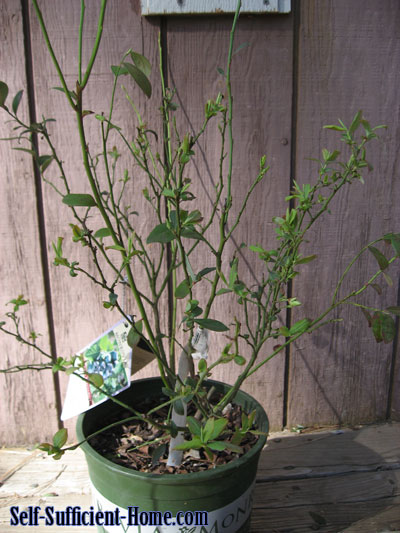Let me start by saving that quite frankly, pruning scares me. It’s intimidating. The thought of hacking off limbs and the possible damage I could cause is frightening. But I put on my big girl panties and got over it. I’ve nipped at various flowers before but the worst case scenario in that situation is losing some flowers…not losing food. It helped that I felt somewhat forced into pruning these blueberries because they had broken and split limbs from a past snow fall.
The blueberries never dropped all of their leaves from last year and it’s now nearly mid February. They were spotted, obviously dead or dying, and taking up room that the new leaves, which were starting to grow, needed. Most of these dead leaves fell off when brushed against and the others gave up their grip on the plant very easily. The ones that wanted to stay were allowed to.

Next, the broken branches were cut back. There are pictures of those in the post about snow damaged blueberries.
Branches with many twigs with brown withered tips were cut back or removed all together.
I tried to mindful of the overall balance of the blueberry bush. The picture above is of the Jubilee variety which has a compact upright shape compared to the Misty variety below which has upright shrub shape. The Misty has main branches which are much more open and spread out at the soil level compared to the Jubilee which has a very tight bunch of main branches at the soil level. I kept the shape of the bush in mind and didn’t try to make them identical in shape. 
Overly crowded spots were thinned. I was worried about removing too much so if they weren’t damaged and not obviously over crowded I left them. I think I did an OK job for my first time. The bushes certainly look happier.
A few key points:
Prune in winter when the blueberry bushes are dormant. The new buds should be visible. I used those as cues to indicate where to prune and where not to.
Reducing the amount of buds may increase the size of the fruit produced.
“Pruning results in longer and more vigorous (thicker) shoot growth in the next season. Heavy pruning causes thicker and more leafy shoots than light pruning. The thicker and later-developing shoots tend to produce fewer fruit buds than those which stop growing earlier in the season. Fruit of the blueberry is borne on wood produced in the previous season (one-year-old wood). By pruning, you are regulating the fruiting potential of next season’s crop. Pruning should be severe enough to invigorate the plant so that sufficient new wood is produced during the following season. You are actually determining the fruiting potential of the crop of two seasons hence by the number and type of cuts you make this winter.” According to Bill Cline and Gina Fernandez Horticultural Specialists at NC State University.
 Timberline Homestead A self sufficient homesteading life
Timberline Homestead A self sufficient homesteading life
I love seeing your blueberries in containers, since that is where I am having to put the ones I got a month or so ago. As soon as they are dormant I will transplant them. I guess I don’t need to go all the way up to half barrels quite yet! Maybe save those for the boysenberry “sticks” I got free.
Thanks for posting lots of photos!